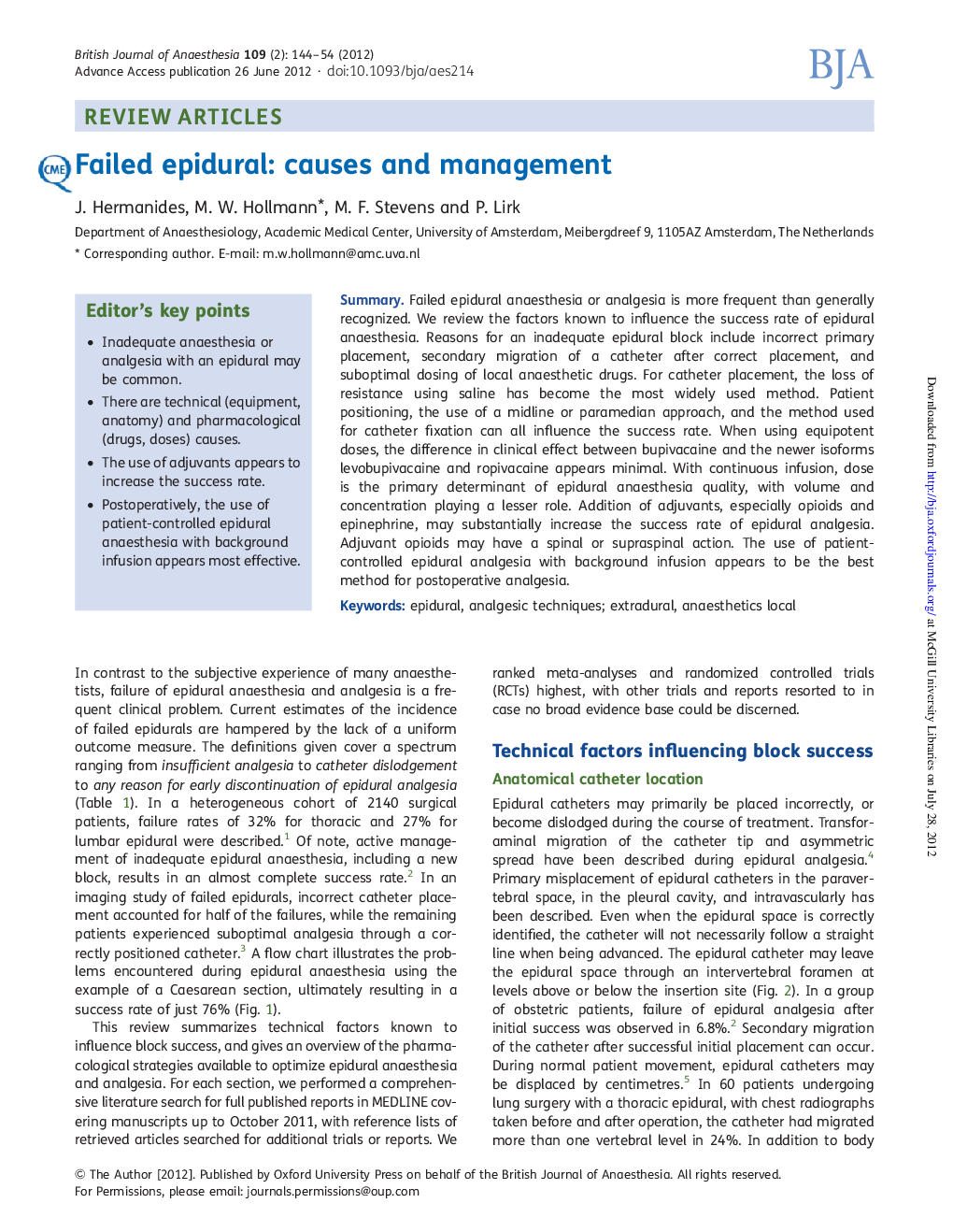| کد مقاله | کد نشریه | سال انتشار | مقاله انگلیسی | نسخه تمام متن |
|---|---|---|---|---|
| 8934687 | 1644585 | 2012 | 11 صفحه PDF | دانلود رایگان |
عنوان انگلیسی مقاله ISI
Failed epidural: causes and management
دانلود مقاله + سفارش ترجمه
دانلود مقاله ISI انگلیسی
رایگان برای ایرانیان
موضوعات مرتبط
علوم پزشکی و سلامت
پزشکی و دندانپزشکی
بیهوشی و پزشکی درد
پیش نمایش صفحه اول مقاله

چکیده انگلیسی
Failed epidural anaesthesia or analgesia is more frequent than generally recognized. We review the factors known to influence the success rate of epidural anaesthesia. Reasons for an inadequate epidural block include incorrect primary placement, secondary migration of a catheter after correct placement, and suboptimal dosing of local anaesthetic drugs. For catheter placement, the loss of resistance using saline has become the most widely used method. Patient positioning, the use of a midline or paramedian approach, and the method used for catheter fixation can all influence the success rate. When using equipotent doses, the difference in clinical effect between bupivacaine and the newer isoforms levobupivacaine and ropivacaine appears minimal. With continuous infusion, dose is the primary determinant of epidural anaesthesia quality, with volume and concentration playing a lesser role. Addition of adjuvants, especially opioids and epinephrine, may substantially increase the success rate of epidural analgesia. Adjuvant opioids may have a spinal or supraspinal action. The use of patient-controlled epidural analgesia with background infusion appears to be the best method for postoperative analgesia.
ناشر
Database: Elsevier - ScienceDirect (ساینس دایرکت)
Journal: British Journal of Anaesthesia - Volume 109, Issue 2, August 2012, Pages 144-154
Journal: British Journal of Anaesthesia - Volume 109, Issue 2, August 2012, Pages 144-154
نویسندگان
J. Hermanides, M.W. Hollmann, M.F. Stevens, P. Lirk,